#Imperial Japanese Navy
Text
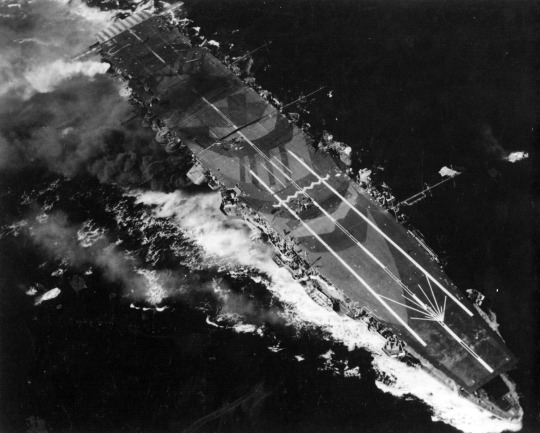
Porte-avions japonais Zuiho attaqué par des avions de l'USS Enterprise pendant la bataille du Cap Engano – Bataille du golfe de Leyte – Campagne des Philippines (1944-1945) – Guerre du Pacifique – Luçon – Philippines – 25 octobre 1944
#WWII#guerre du pacifique#pacific war#campagne des philippines (44-45)#philippines campaign (44-45)#bataille du golfe de leyte#battle of leyte gulf#bataille du cap engano#battle off cape engano#marine impériale japonaise#imperial japanese navy#ijn#porte-avions#aircraft carrier#classe zuiho#zuiho-class#zuiho#cap engano#cape engano#luçon#luzon#philippines#25/10/1944#10/1944#1944
16 notes
·
View notes
Text

Combined Fleet Resupplying for the Battle of Leyte Gulf, in Brunei Bay. From left to right, Mogami (最上) in front of Musashi (武蔵), and Chokai (鳥海) in front of Yamato (大和).
Date: October 21, 1944
Colorized by Irootoko Jr: link
#Japanese Battleship Yamato#Yamato#Japanese Battleship Musashi#Musashi#Yamato Class#Japanese Battleship#Battleship#Warship#Ship#Imperial Japanese Navy#IJN#World War II#World War 2#WWII#WW2#WWII History#History#Military History#October#1944#Japanese Cruiser Mogami#Mogami#Mogami Class#Japanese Cruiser Chōkai#Chōkai#Takao Class#Japanese Cruiser#Cruiser#my post#colorized
42 notes
·
View notes
Text

Imperial Japanese Navy
50 notes
·
View notes
Text

The Type 4 rifle, a Japanese experimental semi-automatic rifle first produced in 1945. Firing the standard 7.7mm Arasaka rifle round, loaded into a 10-round integral magazine via standard 5-round Arisaka stripper clips.
None of the rifles entered service before World War 2 ended, with only ~250 being made at the Yokosuka Naval Arsenal. The rifle also reportedly had issues with jamming and feeding.
9 notes
·
View notes
Text
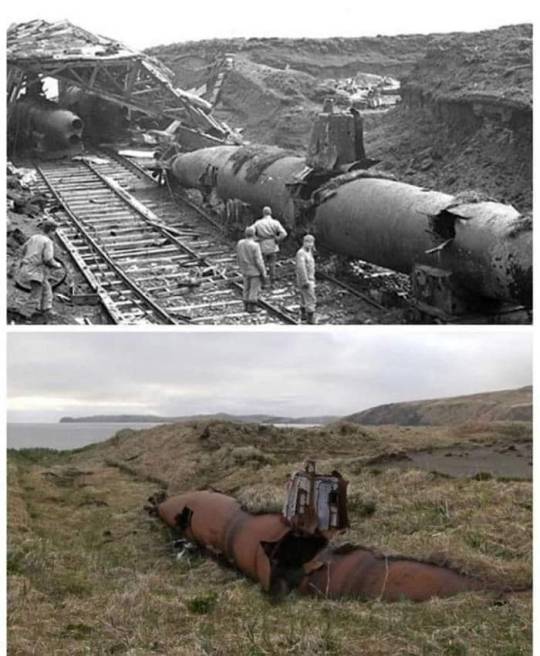
Captured Japanese mini submarine in the Aleutian Islands, 1943 and 2021.See more info, photos & videos here.
9 notes
·
View notes
Text

A Nakajima Kikka (Orange Blossom) jet fighter on the ground before its second (but aborted) flight, 11 August 1945. The pilot, Lieutenant Commander Susumu Takaoka, is seated in the cockpit, and the ground crew is seen in front of the wing and standing near the tail. #WWII #WW2
@WW2HQ via X
2 notes
·
View notes
Text

A Nakajima Kikka (Orange Blossom) jet fighter on the ground before its second (but aborted) flight, 11 August 1945. The pilot, Lieutenant Commander Susumu Takaoka, is seated in the cockpit, and the ground crew is seen in front of the wing and standing near the tail. #WWII #WW2
@WW2HQ via X
2 notes
·
View notes
Text

"MINIATURE SUBMARINES, a Shinto Shrine, chopsticks and Jap characters and wrecked Zeroes were all left behind by the hastily departing enemy on Kiska. American bombs that preceded our troop landings accounted for much of the damage to Jap installations. Sgt. Edmond Birdsell of San Francisco tries out the chopsticks on a bowl of Jap rice, stores of which were found by U.S. forces."
- from the Kingston Whig-Standard. September 9, 1943. Page 2.
#kiska#aleutian islands campaign#アリューシャン方面の戦い#midget submarine#type A Ko-hyoteki#japanese occupation of kiska#pacific war#world war ii#united states army#imperial japanese navy
5 notes
·
View notes
Text
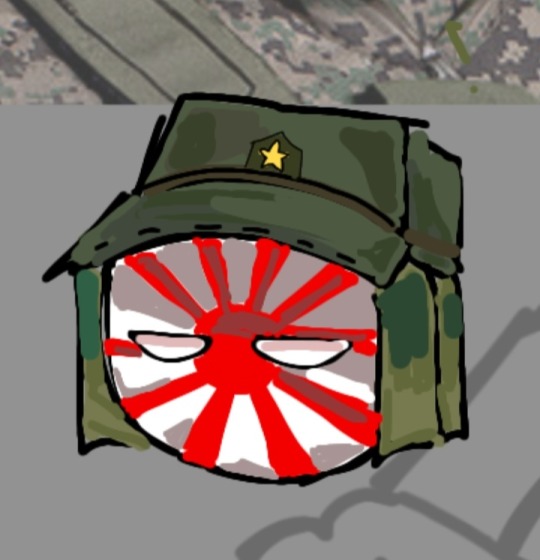
imperial japan doodle
6 notes
·
View notes
Text
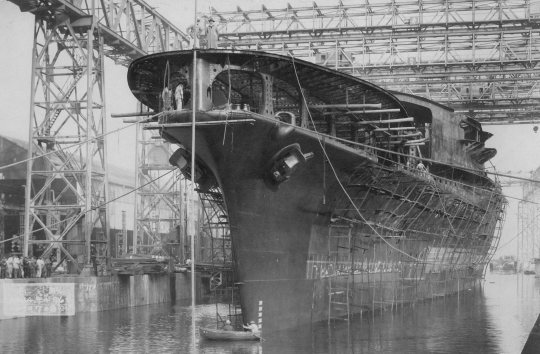
Porte-avions Akagi de la Marine Impériale Japonaise en cours de construction au chantier naval de Kure – Japon – 6 avril 1925
©Maritime History and Science Museum – Kure – Japan
#WWII#avant-guerre#pre-war#marine impériale japonaise#imperial japanese navy#ijn#marine militaire#military navy#marine de guerre#navy#porte-avions#aircraft carrier#classe amagi#amagi-class#akagi#chantier naval de kure#kure naval shipyard#kure#japon#japan#06/04/1925#04/1925#1925
37 notes
·
View notes
Text
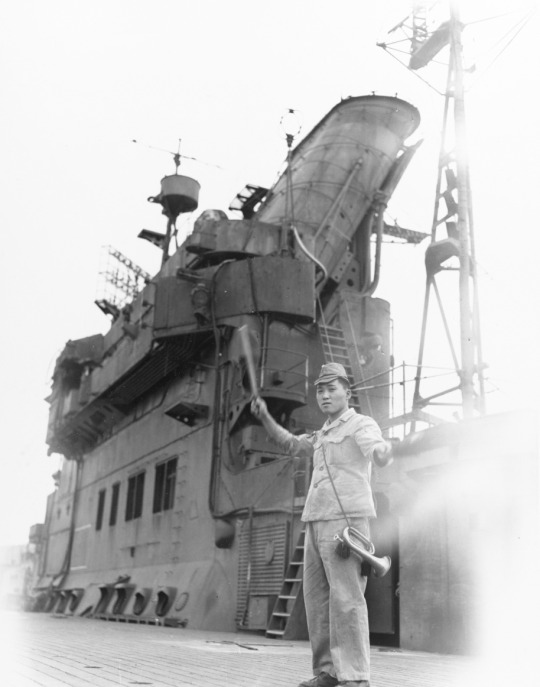
A member of the residual crew of Japanese Aircraft Carrier Jun'yō (隼鷹) signals an approaching tug from the carrier's flight deck. Photographed at Sasebo, Japan.
Note this Japanese Signalman's bugle, and details of the ship's island.
Date: October 19, 1945
NHHC: SC 218541
#Japanese Aircraft Carrier Jun'yō#Jun'yō#Hiyō Class#Japanese Aircraft Carrier#Aircraft Carrier#Warship#Ship#Imperial Japanese Navy#IJN#Sasebo#Japan#postwar#post war#October#1945#my post
31 notes
·
View notes
Text
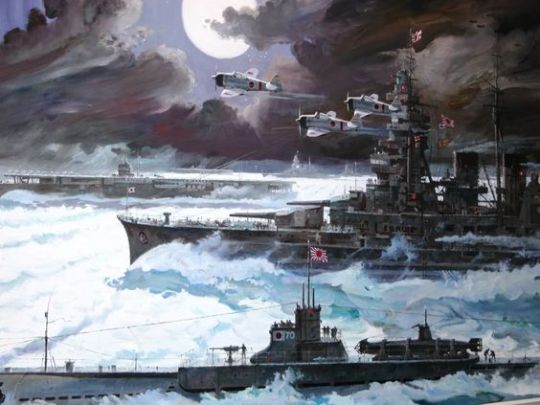
Imperial Japanese Navy
#Imperial Japanese Navy#military#IJN#submarine#battleship#Mitsubishi#Zero#fighter plane#WWII#war#Japan#日本
68 notes
·
View notes
Text
A lone tomb, a memory of Syonan Shipyard, and their links to Keppel House
Much has been made about the “mysterious” solitary Japanese tomb sitting on the southern slopes of Mount Faber. The tomb, which could be thought of as a memorial to a painful time in Singapore’s history, contains the remains of a member of staff of Mitsubishi Heavy Industries’ (MHI) Kobe shipyard, a naval architect by the name of Komoto Ekasa (or Omoto Egasa). Komoto was among an group of 94 MHI…
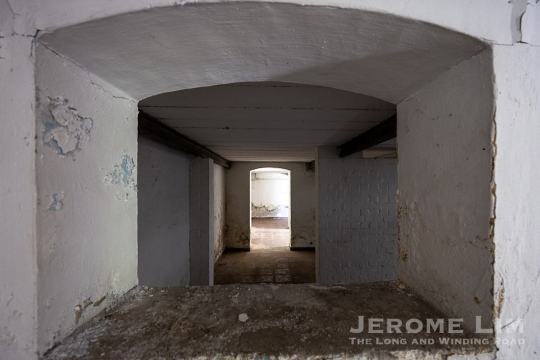
View On WordPress
#Architecture#Changing Landscapes#Forgotten Places#Imperial Japanese Navy#Japanese Occupation#Japanese Occupation of Singapore#Japanese Tomb#Keppel Harbour#Keppel Hill#Keppel House#Kobe Shipyard#MHI#Mitsubishi Heavy Industries#Mount Faber#Old Places#Old Singapore#Photographs#Photography#Places of Mystery#Second World War#Shiprepair#Singapore#Singapore Harbour Board#Syonan Shipyard#World War II#World War Two#WW2#WW2 Sites
2 notes
·
View notes
Text

Japanese naval troops surrender to a US marine - Okinawa 1945. At this late stage of the war even the Japanese tradition of fighting to the death was starting to fail.
#world war two#1940s#worldwar2photos#history#ww2#ww2 history#wwii#wwii era#world war 2#imperial japanese navy#1945#japanese army#usmc#us marines#okinawa#warinthepacific#pacific ocean#pacific
41 notes
·
View notes
Text
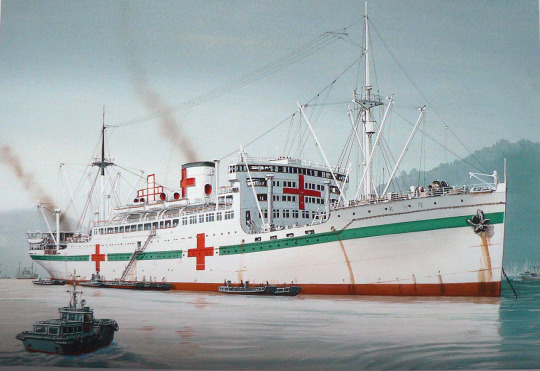
1266x869 El buque-hospital Hikawa Maru (II Guerra Mundial), hoy es un museo flotante que puede visitarse en Yokohama.
6 notes
·
View notes
Text
Imperial japanese Navy and army VS Waifu
3 notes
·
View notes